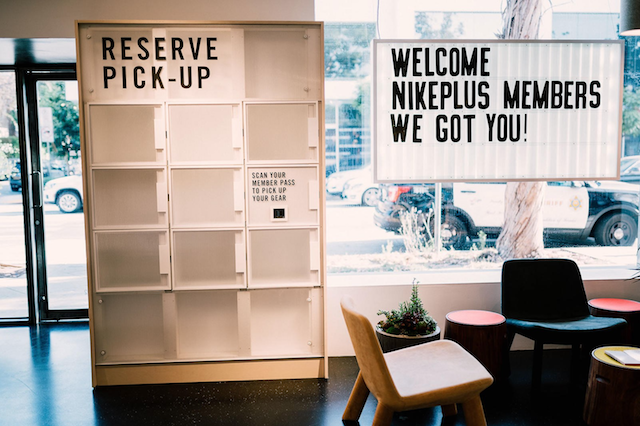A host of new brands and business models have carved out market share from long-standing retail players in recent years.
Those focussing on a more direct-to-consumer (D2C) model are at the forefront of this. By creating a more direct relationship with their audiences they are challenging established businesses. Here’s how it came about and what retailers – and brands – can learn from this trend…
Owning the relationship
Through social media, today’s consumers are being drawn to strong brand personalities and experiences and discovering their value purpose. They expect nothing less than great customer service and a seamless brand experience.
Meeting these priorities comes easily to digitally native direct-to-consumer brands. By eschewing the wholesale model, they have gained absolute control over the customer experience – from design to discovery and transaction. And as they ‘own’ this relationship the brands can continue to nurture it post sale, and create a more personal dialogue with customers.
They are also able to offer an undiluted personality and hero their mission statements without having to temper or compromise the message for a third party. This creates a more honest and authentic personality. A recent study by Stackla found that 86 per cent of consumers think authenticity is important when deciding what brands they like, proving that we are in an age where authenticity is key. That gives the direct-to-consumer model an advantage.
It is no wonder more and more brands are embracing the concept. For example, when razor brand Harry’s entered the market with its subscription service model, Gillette upped its game and launched a ‘club’ that encourages customers to subscribe, offers deals and even personalised razors. Now Gillette is attempting to get one step ahead of the subscription market by launching Gillette on Demand, a service that enables customers to text for direct delivery of products.

The power of physical experiences
This new generation of direct-to-consumer brands – most of them pure-play business models – did not start with a physical presence. But they are now beginning to understand the importance of physical experiences, recognising the critical impact that human-centric, experiential and immersive spaces can have in the ongoing relationships with their customers.
Retail spaces like Casper’s nap room, Loaf’s ‘slowrooms’ and Birchbox’s whimsical pop-ups, these direct-to-consumer brands are enhancing their digital channels with experience-led, customer-centric spaces. Sometimes these are less about the ‘sale’ and revolve around getting to know the brand better and connecting with their audiences.
These businesses treat the physical as another part of the experience, rather than as the main place to shop. For instance, Korean eyewear brand Gentle Monster ( featured image) is famous for the spectacular and ever-changing installations staged in its stores, which, to be honest, have very little to do with the product on sale.
Philippe Chainieux, CEO of Made.com says such an approach to store spaces is all about the brand experience.
“The number one objective is to engage with the audience. Our showrooms are not a retail channel to drive revenues, they are an extension of our online business. The physical footprint is part of the overall brand proposition. When we open in a new market it takes a couple of years to build up the business and get traction. This reinforces the brand proposition.”
Data is king
Owning the relationship means really knowing your customers, and the key to this is data. Direct-to-consumer brands have built their models on the collection and interpretation of this information.
Why is this important? Consumer data will become an increasingly valuable commodity in the very near future. This puts those with a direct-to-customer relationship in a more powerful position. Data is the bedrock for better connections with customers, allowing brands to create customer-centric experiences and ultimately allowing brands to sell smarter. Digitally native winery Winc uses a range of data-capturing methods, starting with a palate profile quiz when customers sign up and then, as co-founder Brian Smith explains, “we track data on both the wine and consumer preference to constantly optimise for better wines and targeted recommendations”.
As artificial intelligence develops, those with the best data libraries will “seamlessly embed themselves into their customers’ lives and sell to them in a way like never before,” as Stylus explains it.
Facebook has now patented technology that reads people’s emotions and predicts what products they might be interested in. In the near future, brands that really know their customers will see the advantage in using technology that understands people’s moods and motivations.
Communitybuilding
Generally, today’s consumers have less brand loyalty than ever before. Building a loyal following takes more than just great product; it requires a targeted community-building strategy. Direct-to-consumer brands are masters at giving power to the consumer, using social media as a way to galvanise their fans and treat their physical spaces more like clubhouses than stores.
The hit American beauty brand, Glossier is a great community-building example. Born of the blog ‘Into the Gloss’, Glossier has built an almost cult-like following that founder Emily Weiss has used to catapult the business to success. Weiss believes in the power of the individual – not the influencer – and by harnessing user-generated content, she is placing people above product by merchandising their stories and creating a community. The brand has also set up a Slack channel where its top 1000 customers can discuss products they like and dislike. By being highly engaged in the conversations their customers are having, Glossier creates better products and sells more of them.
Brands like Glossier have realised that growing a community is not about influencers, ads and product placement, but rather about thinking strategically around how they can unite their fans.
Next-level service

The thing that activates the above pillars and brings them to life at every touchpoint is exceptional service.
Through owning the relationship and customer data, direct-to-consumer brands are able to offer heightened and more personal services that create better in-store and online experiences and build ties with consumers. Stitch Fix, for example, delivers a cherry-picked box of clothing to customers (based on their size, taste and needs) and offers easy free returns for any items they do not want to keep. This business model hinges on providing a convenient service from start to finish.
Bringing it all together
So how does a retailer bring all these pillars together?
As a non-D2C brand, Nike is leading the charge when it comes to living these pillars. The sportswear giant has been increasingly adopting a more direct attitude by narrowing its wholesale contracts, investing heavily in data and CRM tools, and investing in more personalised services through apps and community initiatives. Alongside this, it has been trialling more connected and immersive physical experiences.

If brands can find their own way of embracing these pillars they may just find a way of navigating the changing retail landscape.
This feature originally appeared in Inside Retail Asia’s magazine edition. For information on subscribing visit our shop.






